Tapio | Oct 2024
B2B, SaaS, Personal Project
B2B, SaaS, Personal Project

Timeline
Oct - Dec 2024 (12 weeks)
Type
SaaS Platform
Web app
Industry
Hospitality
My Role - Product Designer
Defining Problem
User Research
Feature scoping
User Flow
Wireframing
Design System
Prototyping
Oct - Dec 2024 (12 weeks)
Type
SaaS Platform
Web app
Industry
Hospitality
My Role - Product Designer
Defining Problem
User Research
Feature scoping
User Flow
Wireframing
Design System
Prototyping
Context
Inefficient management workflows of bubble tea store managers hinder revenue growth.
In today’s bubble tea industry, managers are still overwhelmed by manual and time-consuming tasks, leaving them bogged down and inefficient, or even left behind their competitors but don’t know why.
Inefficient management workflows of bubble tea store managers hinder revenue growth.
In today’s bubble tea industry, managers are still overwhelmed by manual and time-consuming tasks, leaving them bogged down and inefficient, or even left behind their competitors but don’t know why.
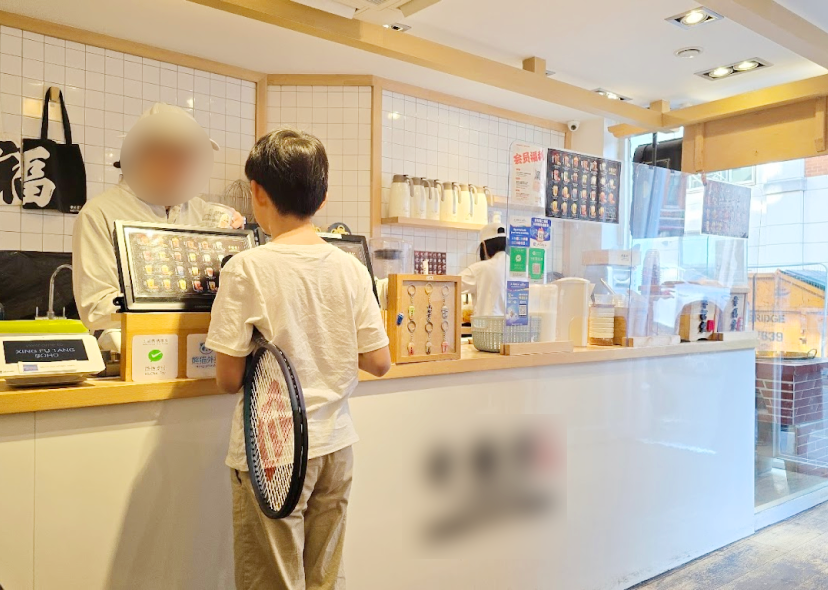


Design Process

Discover
The bubble tea store manager has the responsibility
of both
managing and serving.
managing and serving.
They basically work as 5 roles and work agilely on different tasks from role to role.
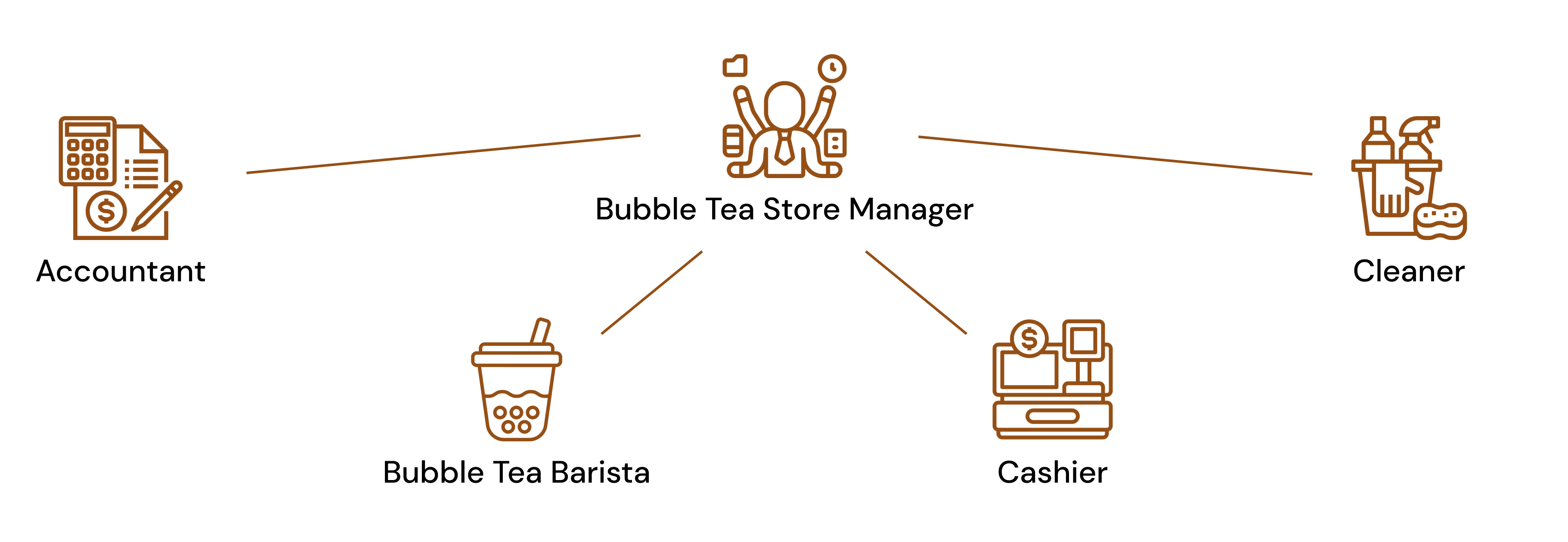
User Interview
All my interviewees thought the
workflow could be easier.
I conducted user interviews with 5 bubble tea store managers and learned about the
daily challenges they are facing and they are using multiple tools like POS machines,
Microsoft Excels, Google Sheets, notebooks and pen to manage the entire operation.



Main Insights
The management work of bubble tea stores is inefficient due to
uncentered workflows.
uncentered workflows.
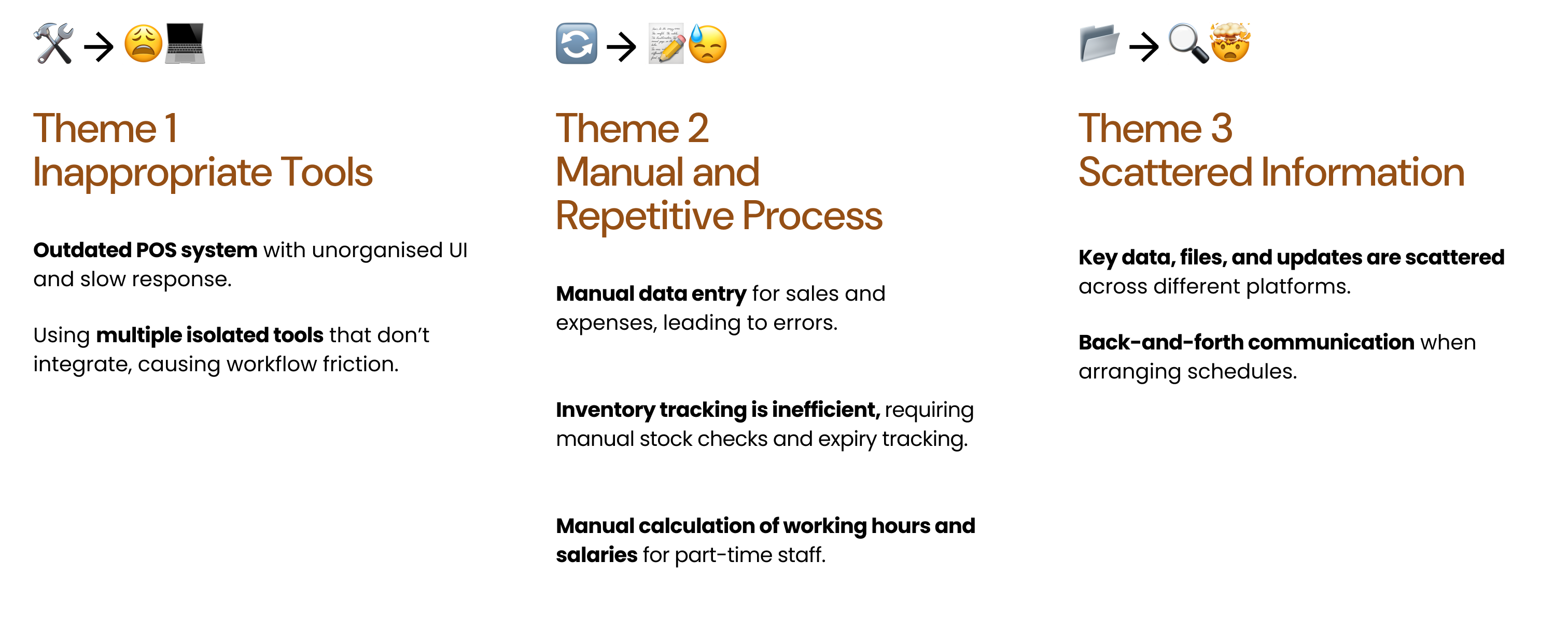
User Journey
Bubble tea store managers are overwhelmed by trivial tasks.
To better understand the user, I learned the typical of a bubble tea manager and mapped out the key user journeys.
To better understand the user, I learned the typical of a bubble tea manager and mapped out the key user journeys.
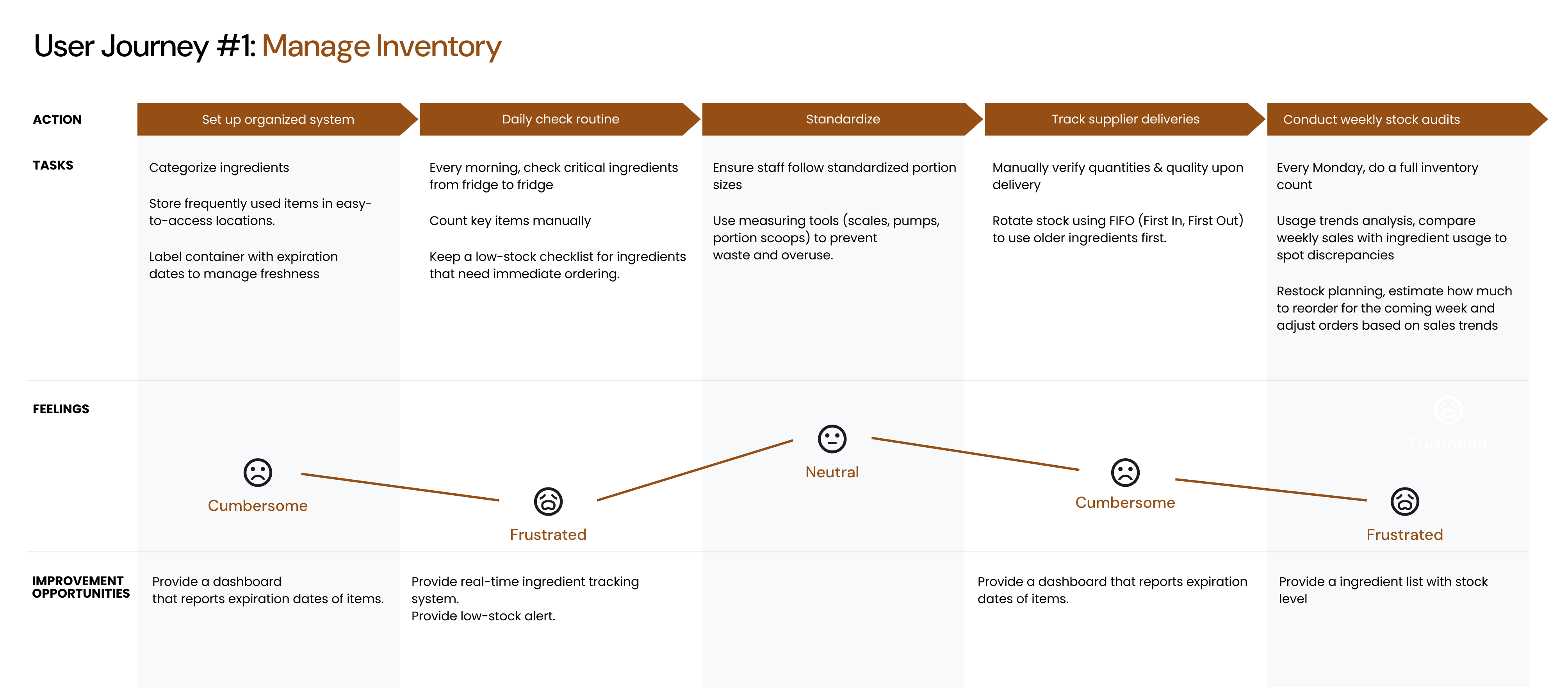
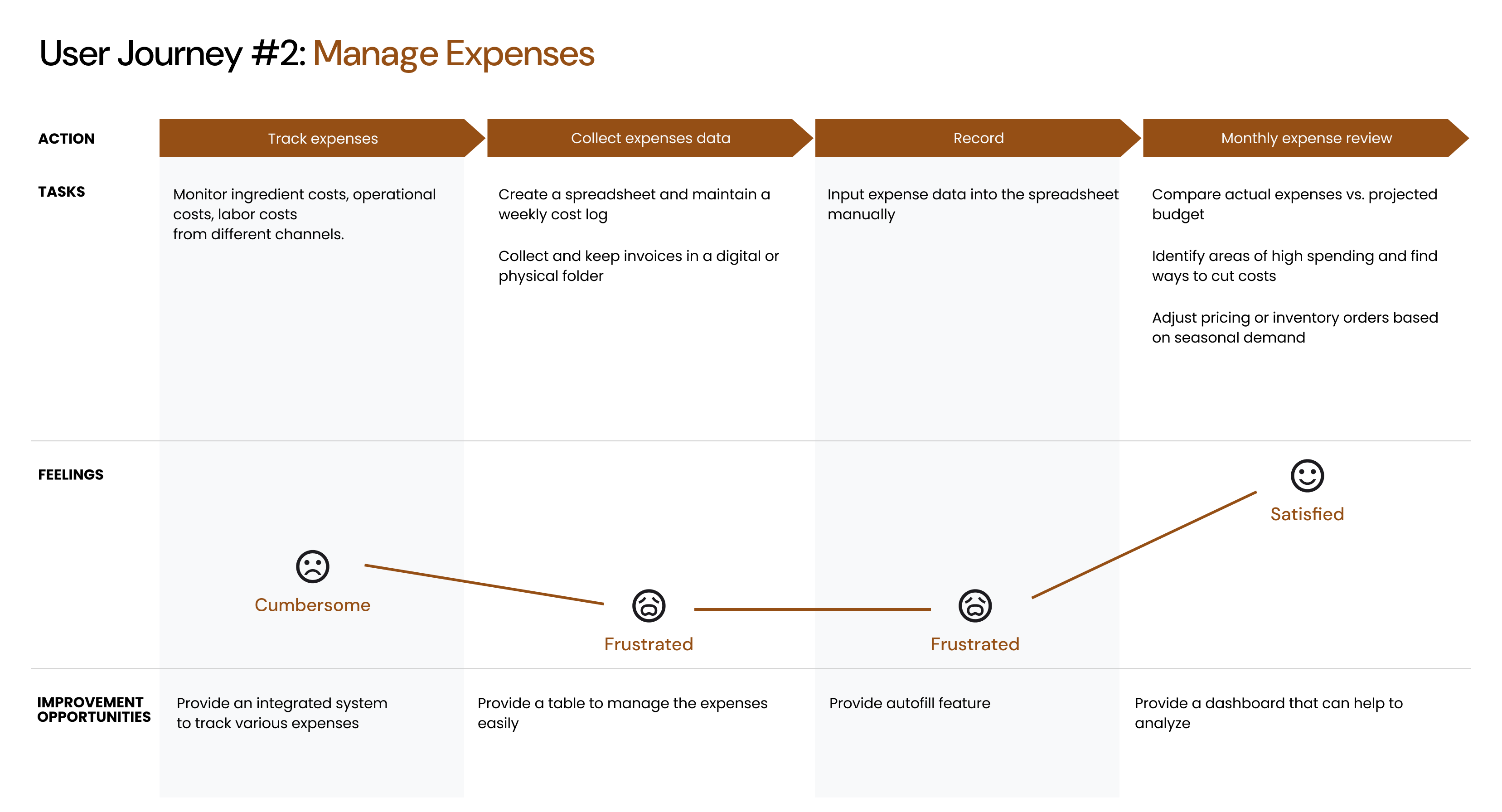

Competitive Audits
There are little to no solutions for bubble tea store expenses and
ingredient level management.
To understand the existing solutions and identify the gaps and opportunities in the market,
I analysed 5 popular tools for restaurants, retail stores.
ingredient level management.
To understand the existing solutions and identify the gaps and opportunities in the market,
I analysed 5 popular tools for restaurants, retail stores.


Define
Goals
1. Reduce the manual and repetitive work for bubble tea store managers
2. Streamline and centralise the workflow
3. Enhance profitability by managing expenses easily
1. Reduce the manual and repetitive work for bubble tea store managers
2. Streamline and centralise the workflow
3. Enhance profitability by managing expenses easily
Design
User Flow + Wireframes
1. Manage Expenses - Import expense invoice with autofill

2. Tracking Ingredients
Step 1 - Setting up the tracking
Step 1 - Setting up the tracking

Step 2 - Linking with the menu item

Test: 3 Major Iterations
1. A Simpler Form
- Based on the user feedback, too detailed classification makes it difficult to see the whole picture.
- Classifying expenses by month and category helps the user draw conclusions efficiently.

2. Tailored forms for ingredient item and menu item
- Different data needs, leading to unnecessary fields and redundant inputs.
- Separating tables allows easy understandability and intuitive adaptation.

3. Provide useful information
- Upon feedback, the user does not need numbers like Takeaway orders and Order cancelled.
- Arrange reasonable hierarchy for readability.

Deliver
Design System

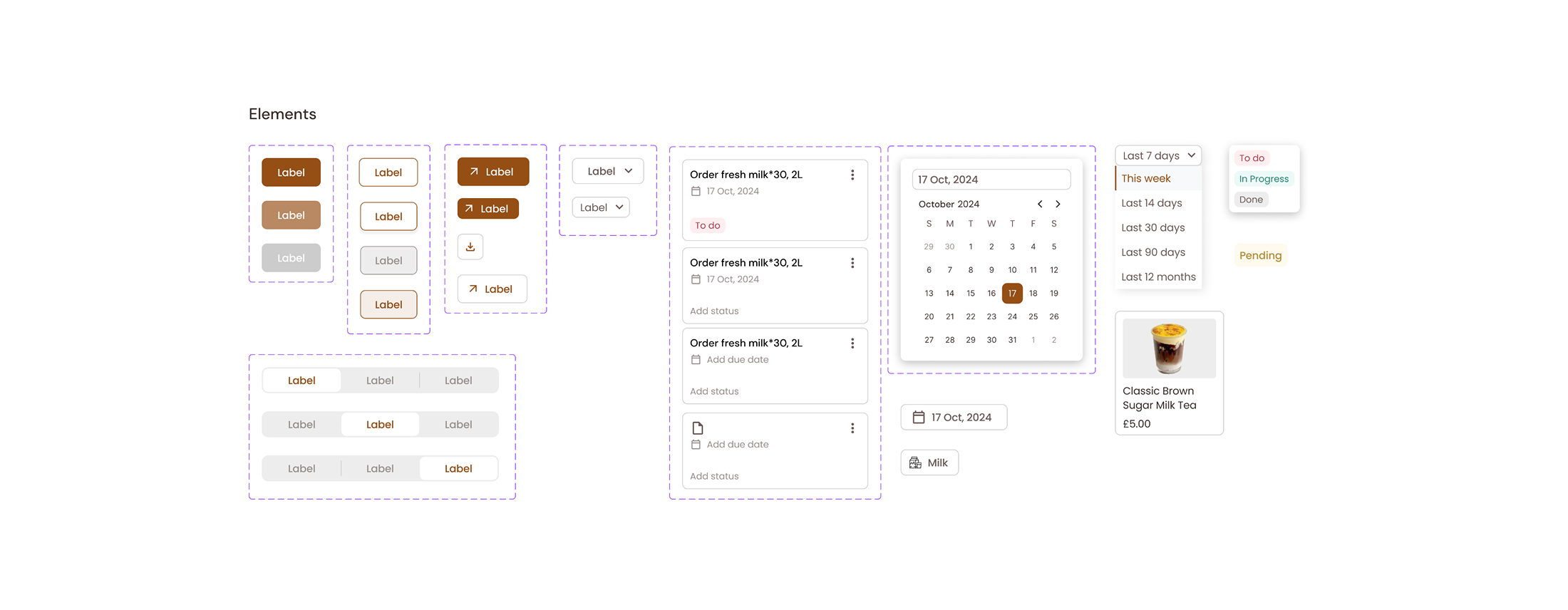
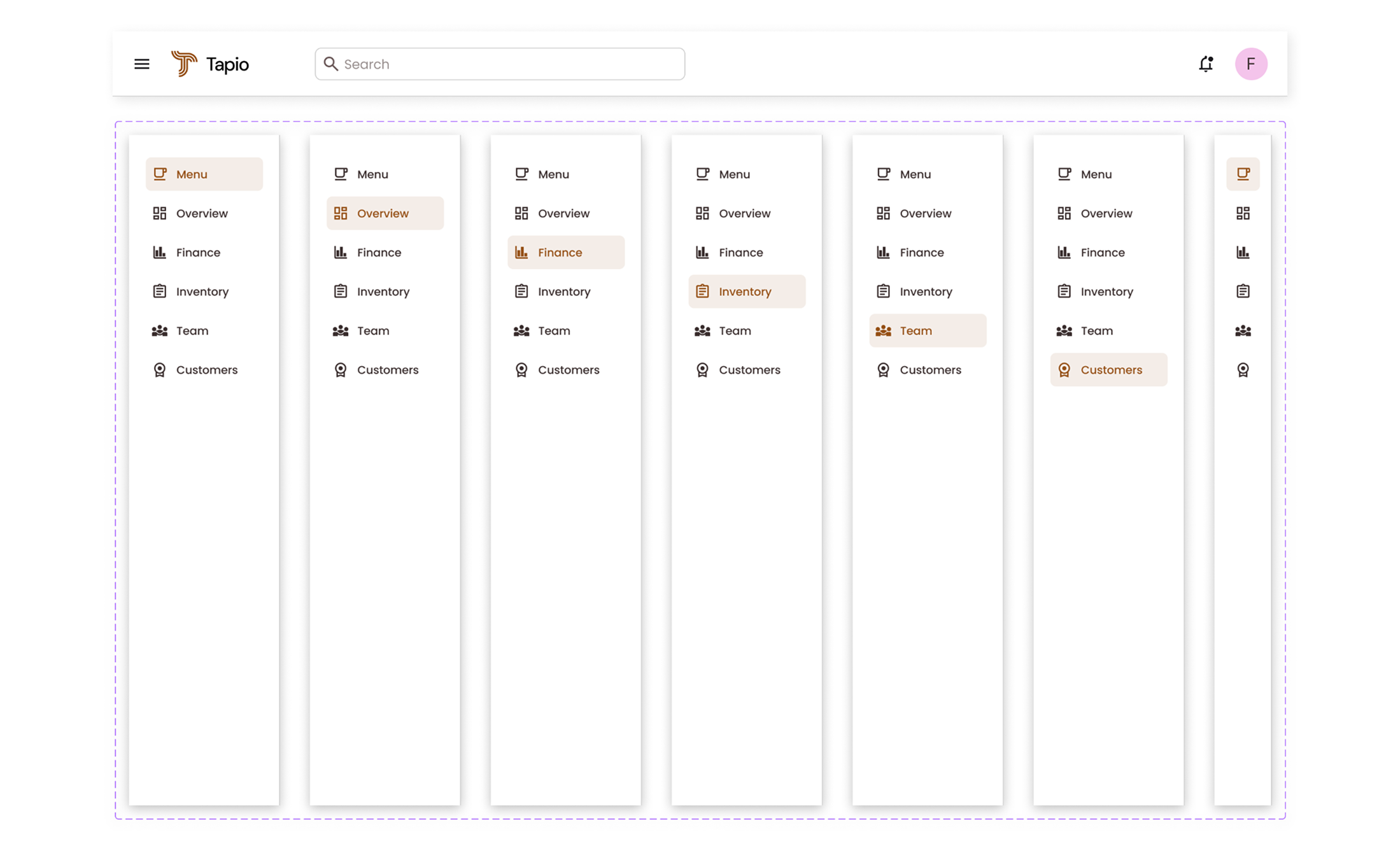
An integrated tool with the key info
- A dashboard to know key data and updates
- Manage various tasks in one place
Manage expenses with autofill
- Expenses reporting
- Easily record expenses
Easily tracking ingredients
- Real-time track ingredient level stock, expiration date
- Ingredients reporting
Reflection & Next Steps
Value vs Effort.
At first, I gathered extensive insights from my interviews and felt overwhelmed by the various issues - for example, managers found knowing staff clock-ins and clock-outs cumbersome. To focus my efforts, I used a value vs. effort matrix to prioritize key issues and chose to design solutions for expense management and ingredient-level tracking.
Implement further functions.
If I have more time, I will further explore more opportunities of managing expenses, for instance, currently, the user need to upload the invoice, what if they only have physical invoice, can we add a feature to scan the invoice to manage the expenses? Also, I will design the experience of how staff interact with this product.
At first, I gathered extensive insights from my interviews and felt overwhelmed by the various issues - for example, managers found knowing staff clock-ins and clock-outs cumbersome. To focus my efforts, I used a value vs. effort matrix to prioritize key issues and chose to design solutions for expense management and ingredient-level tracking.
Implement further functions.
If I have more time, I will further explore more opportunities of managing expenses, for instance, currently, the user need to upload the invoice, what if they only have physical invoice, can we add a feature to scan the invoice to manage the expenses? Also, I will design the experience of how staff interact with this product.